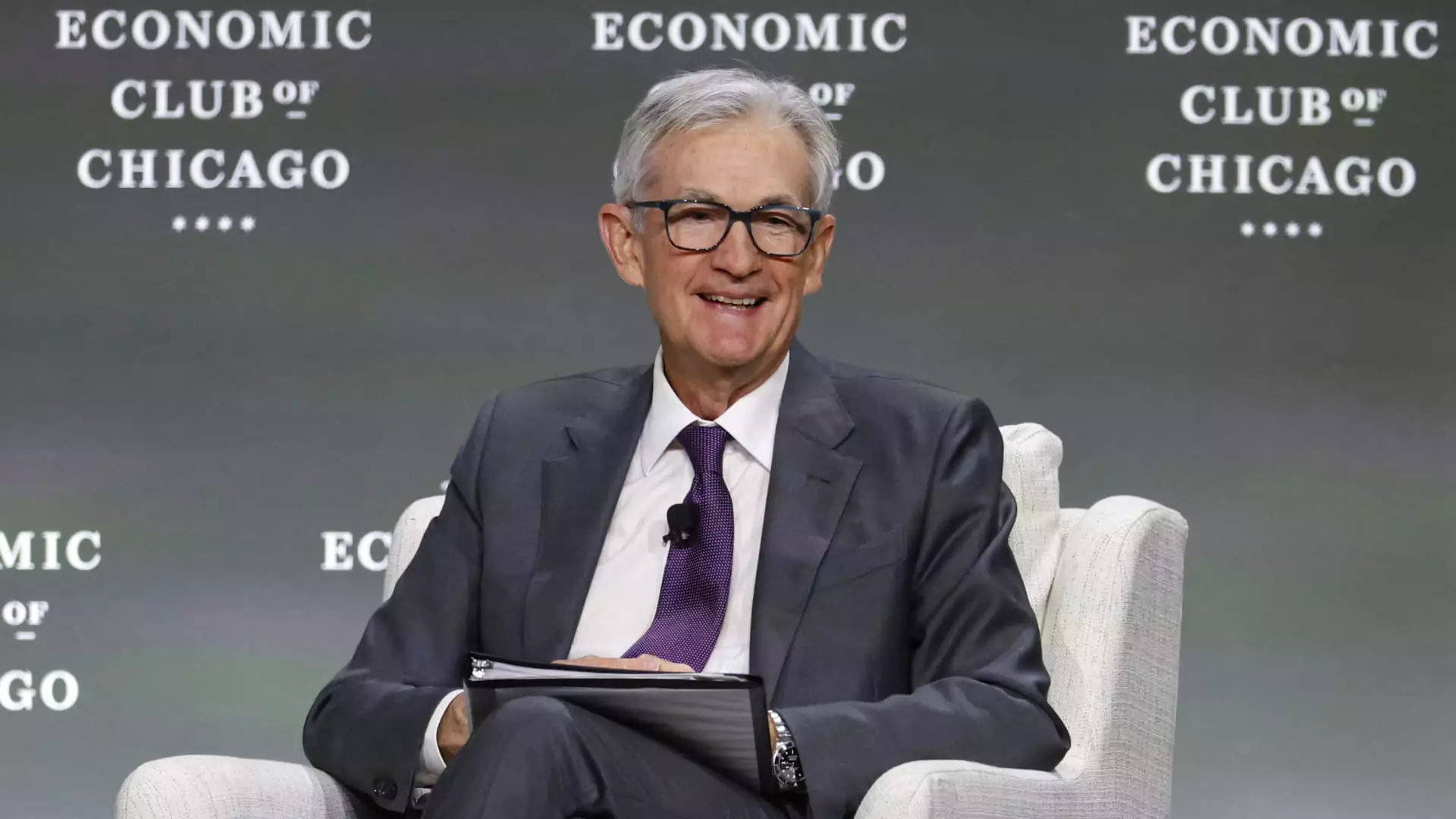As the Federal Reserve prepares for its forthcoming policy decisions, it finds itself at a crossroads, grappling with a mix of economic highs and lows. The question of whether to cut interest rates or maintain the status quo looms large. Strikingly, the dynamics at play reveal just how precarious the balance of economic faith can be—one moment it asserts invincibility, the next it dances on the edge of uncertainty.
Tariffs Create Economic Anxiety
In recent months, President Donald Trump’s tariff policies have stirred a cocktail of mixed signals flooding the economy. This political maneuvering brings with it an inherent disharmony; businesses teeter between taking risks and playing it safe under the constant threat of tariffs. The posturing related to trade deals adds layers of volatility, leaving the Fed in a quandary. This is not just a matter of economic self-realization; it’s a crucial moment where fiscal policy must navigate through exterior shocks threatening consumer and business confidence.
Yet, with the White House signaling a slight softening of its tariff aggression, the central bank faces added complexity. It’s critical to understand that the influence of tariffs extends beyond immediate impacts; they sow seeds of instability that could ripple through consumer sentiment and spending habits. With these variables swirling, the Fed would be ill-advised to rush into policy shifts without clearer economic indicators.
Consumer Sentiment at an All-Time Low
One cannot overlook the striking paradox manifesting in consumer optimism, which is currently at multi-year lows. Even as macroeconomic indicators like job growth appear relatively strong, consumer confidence lags. If people aren’t spending, how can we expect businesses to invest or hire more workers? This dissonance—the stark contrast of employment gains against consumer pessimism—should serve as a cautionary tale for the Fed as it navigates through these turbulent waters.
With inflation expectations climbing to multi-decade highs, the Fed must ask itself: Is it truly ready to risk further alienating consumers with potential rate cuts? The consequences of naïve policymaking could escalate into an overly suppressed economy, leading to stagnation. The fallacy of relying solely on quantitative indicators without weighing consumer sentiment could be deeply detrimental.
The Pain of Mixed Economic Signals
The sheer complexity of managing a national economy manifests in the murky waters of mixed economic signals. While some analysts advocate for cuts as a tactical response to perceived vulnerabilities, others argue for more patience as economies evolve. This confusion poses a dire need for policy clarity.
Former Fed official Vincent Reinhart aptly pointed out that with tangible uncertainty dominating the horizon, the Fed would be foolish to project aggressive changes. Instead, it seems more prudent to embrace a measured, cautious approach, allowing time to see how the economic landscape materializes in response to existing tariff policies and new data.
Importance of Data Over Assumptions
The Fed’s decision-making process should prioritize hard data above all else. While the Fed currently finds itself not updating its economic projections, the time must be spent meticulously analyzing incoming information. As the age-old adage goes: “data is king.”
Fictional forecasts often mislead; relying excessively on projections has frequently led central banks astray. Waiting until meaningful data emerges to inform their stance would uphold the Fed’s credibility, suggesting that policymakers are genuinely committed to understanding the economy’s pulse.
The momentum toward two interest rate cuts, as endorsed by financial firms like Goldman Sachs, underscores the notion that the central bank must not succumb to political pressures—especially from external entities urging hasty decisions based on superficial indicators. Stabilizing the economy requires a commitment to patience and rational analysis rather than impulsive reactions.
The Challenge of Political Pressures
In a world where political dynamics constantly shift, the Federal Reserve must remain resilient against political pressures, particularly those emanating from the White House. The risk of losing autonomy during pressure-laden times is real, as the current administration has openly pushed for rate cuts, potentially blurring the line between political whims and sound economic policy.
Reinhart’s insight about the Fed’s cohesion being reinforced through external criticism is astutely relevant. Facing backlash, they may find themselves bound as a united entity, resisting impulses that could derail economic recovery. The integrity of the Federal Reserve’s decisions must ultimately reconcile with the broader socioeconomic question: Are policymakers prepared to resist impulses in the name of a stable economy?
In wrapping this analysis together, it becomes glaringly evident that America’s central bank must tread cautiously. Solving complex economic puzzles necessitates patience, understanding, and a commitment to evidence-based choices—not merely political appeasement or pressure. The future of American economic health decisively hinges on their strategic navigation through the tumultuous terrain ahead.

